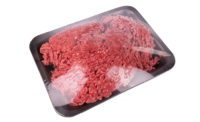Packaging Tech
Sustainable changes coming to MAP

During the last year or so I’ve written about how sustainable packaging is gradually making inroads into the modified atmosphere packaging segment. I’m not cheering for it, but I’m not cheering against it either. I’m just observing.
Sustainable packaging holds my interest mostly because some of the materials truly seem to have gotten their price and performance mix into competitive balance. Their ultra-high barrier claims alone place them into the middle of any reasonable MAP discussion. Now, they are not only being considered by a few visionary processors and retailers, but have been adopted. Most likely, more will follow suit. In light of no really big step changes in traditional MAP technology, this is the most interesting story in the segment because it represents change.
Recently, I was told sustainable packaging is on the verge of widespread adoption in MAP. Five or 10 years ago that was considered bold talk. Perhaps it still is, but it’s not so much the technical impediments that must be conquered — it’s change.
The marketplace has been intrigued by sustainable packaging, and its mood has shifted from seeing a novel, feel-good idea to a real option. Processors are warming to it in part because they are encouraged by retailers, consumers, investors and government policies to adopt sustainable strategies across the totality of their businesses, not just disconnected pockets like energy conservation or recycling, and sustainable packaging fits nicely into that mosaic, according to a source.
If performance and price are closer to parity with traditional materials, what else needs to change before there is more widespread acceptance?
Here at home, as in Europe, environmental concern needs to become a true influence in shoppers’ buying decisions if greater demand for sustainable packaging is going to happen. I’ve been told that sustainable materials still aren’t seen as mainstream, and that creates lingering uncertainty. Apparently, there are retailers who are very certain about differentiating their fresh-meat packaging because those same sustainable barrier materials have appeared as vacuum skin packages, a challenge to MAP.
An interesting observation suggests thinking of how attitudes would change if a big packaging brand marketed a truly sustainable product. Most likely, people would view it as less of a niche and more mainstream.
The past several years have taught us many things, caution being one. Intuitively, processors understand the benefits of adopting a high-performance sustainable replacement. But even under the best of circumstances, changing packaging requires a lot of work and could mean breaking existing relationships and a lot of drama. No one wants to be the one who gets it wrong.
“Champions are needed along the supply chain who advocate real business change, not just packaging change. If the conversation is only about the tangible benefits of price and performance, then what’s the argument for sustainability? Business models are embracing sustainable practices and packaging will be a part of that. The intangible values of sustainable packaging will accrue through differentiation, brand preference and goodwill,” that same source explained.
Change is uncomfortable, unavoidable, and scary. Looked at from another perspective, it can also mean opportunity.
Looking for a reprint of this article?
From high-res PDFs to custom plaques, order your copy today!







